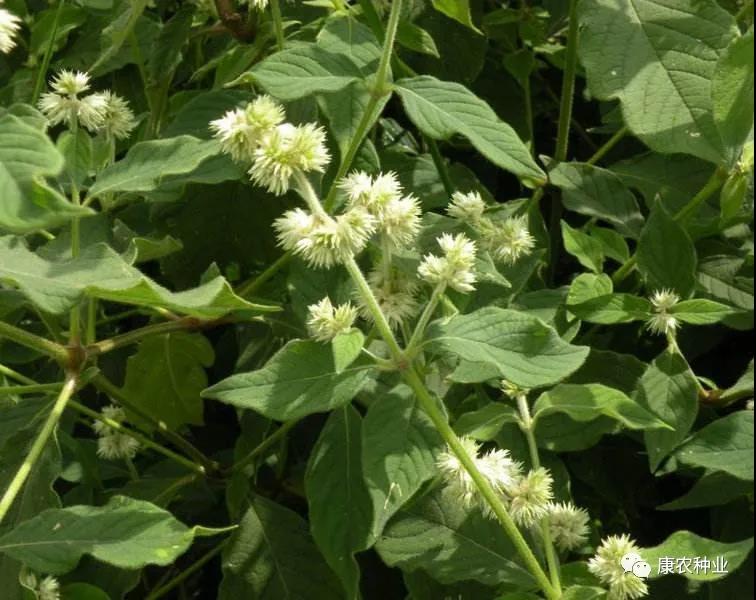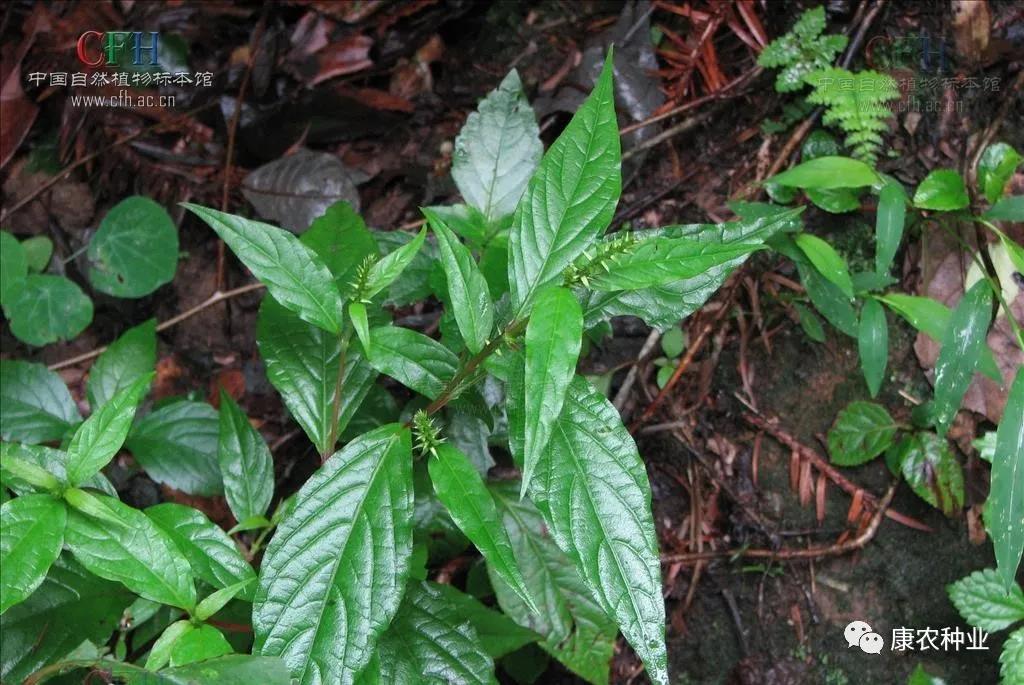Chuan Achyranthes
(Cyathula officinalis Kuan)

Source of medicinal materials:

The dry root of Cyathula officinalis Kuan, an amaranth plant. Excavation in autumn and winter, remove the reed head, fibrous roots and silt, kang or sun until semi-dry, pile it to regenerate, and then kang or sun dry.
—— "National Compilation of Chinese Herbal Medicine"
Plant form:

Perennial herb, 50-100cm high. The taproot is cylindrical and the skin is nearly white. The stem is slightly four-sided, much branched, and grows sparsely coarse hair. Leaves opposite; petiole length 5-15mm; leaves elliptical or narrowly elliptic, a few obovate, 3-12cm long, 1.5-5.5cm wide, apex acuminate or caudal tip, base wedge or broad wedge, entire edge, pasted on top Growing coarse hair, denser underneath. Compound cymes are densely integrated into flower pellets; there are many flower pellets, 1-1.5cm in diameter, light green, usually almost white, alternately opposite on the branch end inflorescence axis, dense or 2-3cm apart; compound cymes 3 -6 divergence; cymes bisexual, flowers in the center, sterile flowers on both sides; bracts ovate, 4-5mm long, bright, apex thorns or hooked; tepals of sterile flowers become with Hooked hard thorns; bisexual flowers 3-5mm long, tepals lanceolate, apex thorns pointed, 3 narrow inside; filament bases densely nodular fascicles, staminodes oblong, 0.3-0.4mm long and wide Approximately 1/2 the length, apex tooth-like lobed; ovary cylindrical or obovate, 1.3-1.8mm long, style about 1.5mm long, persistent, stigma capitate. Utricle elliptic or obovate, 2-3mm long, 1-2mm in diameter, light yellow, wrapped in persistent perianth. The seeds are oval, lenticular, 1.5-2mm long, reddish and bright. Flowering period from June to July, fruiting period from August to September.
—— "Chinese Materia Medica"
Character identification:

The root is cylindrical, slightly curved, slightly branched, 25-60cm long and 0.5-3cm in diameter. The surface is yellow-brown or gray-brown, with slightly twisted longitudinal wrinkles and lateral root marks, as well as obvious horizontally protruding lenticels; the upper part remains woody rhizomes. The quality is tough, not easy to break, the section is light yellow or brownish yellow, the vascular bundles are dotted, and they are intermittently arranged into several concentric rings. Smell and sweet. It is better to have strong strips, flexible texture, few branches, and light yellow cross-sections.
—— "Chinese Materia Medica"
Biological characteristics:
Like a cool, humid climate. It is mostly cultivated in alpine mountainous areas with an altitude of 1200-2400m. It is better to cultivate in a mountainous area of 1500~1800m. The quality and yield of roots are high. It is suitable to cultivate on sunny, deep soil and rich in humus. Avoid continuous cropping.
—— "The Flora of China"
Functions and indications:

Dispel wind, remove dampness, relieve menstruation, and promote blood circulation. Cure rheumatism, waist and knee pain, foot atrophy, tendon contracture, bloody, hematuria, amenorrhea in women, agglomeration. It is used for amenorrhea, congestion, arthralgia, foot atrophy and tendon contracture, blood in the urine, and fall and fall injury.
—— "Chinese Medicine Dictionary"
Various forums:

① "Compilation of Medicinal Materials": "It has the effect of relieving pain by treating stab wounds."
② "Chinese Medicine History": "Bloodbreaking decreased."
③ "Handbook of Chinese Medicinal Materials": "Gongduo dispels wind and dampness, other things are the same as those of Achyranthes.
④ "Sichuan Traditional Chinese Medicine History": "Quiet wind and dampness, relieves menstruation and disperses blood. Treats cold and damp waist and leg bone pain, foot atrophy and tendons, women's amenorrhea, gonorrhea, hematuria, vaginal dysfunction, and drowning."
—— "Chinese Materia Medica"